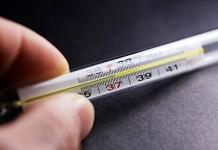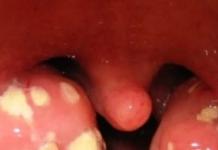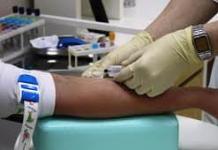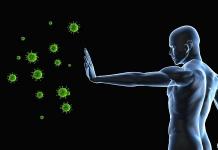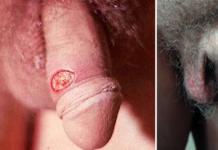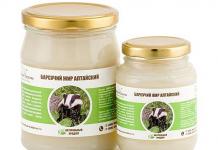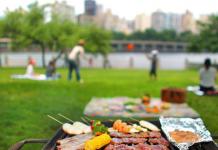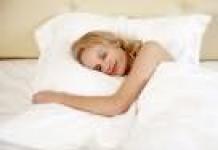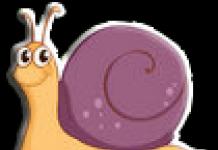Apple moth. The most common pest of apple and pear. It is found everywhere. Caterpillars that appear about 15-20 days after the end of flowering of early apple varieties are harmful. They bite into the fruit, reach the seed chamber and feed on its contents. Caterpillars overwinter under peeled bark, in hollows, cracks of backwaters, and the upper layer of soil. They pupate in the spring, and butterflies begin to fly out of the pupae. The flight is extended and sometimes lasts more than 1-1.5 months. The female lays (one at a time) from 60 to 120 eggs, first on the leaves, and then on the fruits.
Control measures. To destroy caterpillars wintering in the bark, under lumps of earth, in weeds, backwaters, it is necessary to clean the tree trunks from the top dry layer of bark onto a laid film in autumn or early spring, and burn the cleaning. At the same time, other pests that winter in the bark and on its surface also die (caterpillars of scoops, moths, moths, eggs of the winter moth, scale insects, etc.). Dig up the trunk circles.
In June, it is necessary to put on the trunks fishing belts 15-20 cm wide made of burlap, old worn clothes, paper and tied tightly with twine. Every 10-12 days, the belts are removed, and also pick out with a knife from the bark under the belt of the caterpillar and pupa. Then the belt is put back on. In autumn, after harvesting, the trapping belts are removed and pests accumulated in the bark under the belts are destroyed. Paper belts are burned, and cloth belts are scalded with boiling water and stored for use next year.
To combat caterpillars, volunteers are collected during the summer. Butterflies can be caught using trapping troughs with molasses, compote, bread kvass or other odorous Baits.
If there are a lot of moths in the garden, it is necessary to sprinkle the trees before the caterpillars emerge from the eggs, 15-18 days after the petals of winter apple varieties fall. After 12-14 days, the treatment should be repeated. Use chlorophos or karbofos (20 g per 10 L of water). From biological methods of control, it is recommended to use insectivorous birds, and the release of the trichogramma egg-eater (80 thousand per 1 ha in 2 terms).
The fight against the moth is combined with the fight against scab, fruit rot and other diseases and pests.
Apple blossom beetle. Damages the apple tree, less the pear. Small beetle up to 5 mm long. brownish brown. The larvae are curved, wrinkled, yellowish, legless.
Beetles overwinter in cracks in the bark, in the upper layer of soil, fallen leaves. In early spring, they come out of wintering and intensively feed on the kidneys. The females lay one egg at a time in the buds, the larvae that emerge from the eggs eat the stamens and pistils. Damaged buds do not bloom, dry up. Larvae pupate in them.
Control measures- shaking off beetles on shields, film. Spraying of trees during budding period Until the inflorescences are exposed. Against young beetles during the period of ovary abscission - 0.2% chlorophos solution. (20 g per 10 l of water),
Unpaired silkworm. Caterpillars damage 300 plant species. The butterfly flies at night. Caterpillars are dark gray with three yellowish stripes on the back. Pupa blackish-brown.
The emergence of caterpillars from eggs begins during the budding period. The hatched caterpillars begin to eat the blossoming buds and leaves. In the second half of June, they pupate between leaves or in cracks in the bark. The butterflies that emerged from the pupae do not feed on anything and begin to lay eggs on the trunks, stumps, covering them with hairs from their abdomen. Ovipositions are oval in shape, covered with yellow fluff. Caterpillars form inside the eggs in the fall, which remain in them to winter.
Control measures. Covering egg clutches with kerosene and tar (two parts of kerosene for 1 part of tar). Against caterpillars, ground spraying with 0.2-0.3% chlorophos (20-30 g per 10 l of water) or 0.5-1% entobacterin (50-100 g per Yul of water).
The silkworm is ringed. A widespread pest of apple, pear and other fruit and deciduous trees. Adult caterpillars are bluish-gray, covered with soft hairs. On the dorsal side there is a bright white line with two orange stripes along the edges. Pupa black, with sparse hairs, in a double white spider cocoon. Caterpillars emerge from eggs1 during the budding period and begin feeding on buds and leaves, and damage buds and flowers on fruit trees. During the years of mass reproduction, they eat up all the foliage on the trees, live in colonies, during the day they are in the forks of thick branches, in spider webs. Caterpillars of the last instar crawl over the tree and weave a double cocoon between the leaves and pupate. At the end of July, butterflies fly out, which do not need food, they immediately start laying 200-400 eggs in the form of rings on two-year shoots. Caterpillars develop inside the eggs and remain in their shells for the winter.
Control measures. Branches with eggs are cut and burned in autumn, winter and early spring. In the spring, before bud break, trees are sprayed with a 2-3% nitrafen solution to destroy the eggs on the branches. During the emergence of caterpillars from eggs, trees are sprayed with one of these poisons: 0.2% chlorophos (20 g per 10 l of water) or 0.2-0.3% karbofos (20-30 g per 10 l of water). After flowering, trees can be sprayed with 0.5% -entobacterin. Remove spider nests with pest caterpillars from trees and destroy them.
Hawthorn. Harmful to apple, pear, plum and other deciduous species. The butterfly is large, the wingspan is up to 65 mm, the wings are white with black veins. Butterfly years begin in the second half of June. Butterflies feed on the nectar of flowers and lay on the upper surface of the leaves golden-yellow eggs in the form of an elongated barrel.
The hatched caterpillars live in groups. Feeding on leaves, they skeletonize them and entwine them with cobwebs. The caterpillar is hairy, with three black and two brownish-orange stripes on the back. Caterpillars overwinter in "winter nests", arranged on damaged leaves attached to the shoots with a cobweb. In the spring, the caterpillars leave their nests and begin feeding on the buds, and then move on to leaves, buds, flowers, often exposing trees. In May-June, during the period of ovary formation, caterpillars pupate on the trunks and branches of trees. Pupa is yellowish-white.
Control measures. In autumn, winter and early spring, collecting and burning winter nests. Against young caterpillars, ground spraying with 0.2% solution of 80% wetting chlorophos powder (20 kg per 10 l of water) or 0.5-1% entobacterin (50-100 g per 10 l of water).
Apple sawfly. Already 2 weeks after flowering, wormy fruit ovaries can be found on apple trees, damaged by the larva of the apple sawfly.
Adult insects are dark brown in color. Abdomen yellow, wings transparent, body length 6-7 mm. In mass, they fly during the flowering of the apple tree. For several days they feed on the nectar of the flower, then the females saw through the skin near the flower garden with the ovipositor and lay there one egg at a time. In total, the female can lay up to 70 eggs. One larva damages 3-5 fruits. Damaged fruits fall off. After finishing feeding, the larvae go into the soil to a depth of 3-12 cm, weave spider cocoons, in which they remain to winter. In the spring of next year, most of the larvae pupate.
The mass reproduction of the apple sawfly is favored by the rains that have passed before flowering. This is due to the fact that it is easier for adult insects to get out of loose moist soil after wintering. In such years, the sawfly does great harm to the gardens, destroying almost the entire ovary.
Control measures. Collection and destruction of damaged fruits on and under trees, Spraying apple trees immediately after flowering with chlorophos or trichlorometaphos (20 g per 10 l of water), or karbofos (30 g). Digging the soil under the trees in autumn or early spring.
May and June Khrushch. May eastern beetle is a polyphagous pest. Its larvae damage the roots of plants in young orchards, nurseries and berry fields. Adult beetles are large, 22-28 mm long, with reddish-brown elytra with a black border along the edge. The larvae are white, thick, fleshy, arched, with six pectoral legs, with a yellow head. Beetles and larvae hibernate different ages at a depth of 25 to 150 cm. In early May, coming out of hibernation, they devour young leaves, mainly of birch, oak, maple.
Beetles are most active on warm spring evenings, while during the day they usually hide in the crown. Females lay eggs in the soil, climbing to a depth of 10-12 cm for this. Development of larvae in the soil lasts from 3 to 5 years. The hatched larvae feed on organic debris at the beginning. Then, from the second year of life, they switch to feeding on plant roots, causing significant harm to them. The beetle larvae are polyphagous and cause severe damage not only to fruit and berry crops, but also to many vegetable and field crops. Young plants damaged by larvae wither, stop growing and die.
In our gardens and orchards there is also June beetle. It damages the same crops as May. June beetle is smaller in size. Measures to combat it are the same.
In collective and other small gardens, in the event of mass reproduction of May and June beetles, beetles can be shaken off the trees onto the covered sackcloth, then destroyed. This is done early in the morning, while the beetles are numb.
As a preventive agrotechnical measure, it is recommended to lay berries on well-developed loose soils. Most in a simple way the extermination of the larvae of the May and June beetle is manual collection during the digging of the soil.
When laying new plantings of berry fields, it is necessary to identify the contamination of the soil with the larvae of May beetle. If there is more than one larva per 1 sq. meter planting strawberries is not recommended: you must first carry out measures to clean the soil from larvae. In collective gardens, it is not recommended to add chemicals to the soil to destroy the larvae of the beetle.
Cherry elephant. The beetle is golden-green or golden-red, the larva is yellowish-white, curved, legless. Beetles, partly larvae, overwinter in the soil. Beetles emerge from the soil during cherry blossoms. They damage the buds, leaves and buds of the cherry, then feed on the young ovary of the cherry, gnawing holes in the pulp. The female lays eggs one at a time in the fetal bone, up to 130 eggs in total.
The larva feeds inside the still soft bone, eating away its contents, and after 20-25 days it emerges from the bone, falls to the ground and pupates in the soil. The beetles stay overwintered in the soil. In our conditions, it has a one-year generation (generation).
Control measures. Spraying before flowering with 0.2% solution of 80% c. p. chlorophos (20 g per 10 l of water).
Apple honeydew damages the apple tree. Small winged insect of yellowish-green color. Has two pairs of transparent wings. Eggs of reddish-yellow color overwinter. The larvae released from the eggs suck the juices from young leaves and buds, while secreting the so-called honeydew. Damaged leaves become smaller, buds and flowers fall behind in growth, fall off.
Control measures. Spraying with 3% nitrafen before bud break at a temperature not lower than 5 ° C. In gardens heavily infested with apple sucker, spraying with 0.2% chlorophos solution or 0.2-0.3% karbofos solution is carried out. You can fumigate trees with tobacco smoke against adult (winged) copperheads. In calm, windless weather, heaps of straw, garbage are placed in the aisles, onto which tobacco dust is poured, 2 kg per heap. Acrid smoke, enveloping trees, kills copperhead, etc.
Cherry slimy sawfly. It hibernates in the soil at the stage of feeding larvae. In spring, the larvae pupate, and in July adult insects of a brilliant black color, with faintly visible shiny wings, fly out. Females lay eggs on the underside of the leaf. After 7-15 days, larvae of a greenish-yellow color, up to 10 mm long, with a thickened front edge of the body, hatch from the eggs. After a while, they become covered with mucus. The larvae skeletonize the leaves, that is, they eat the flesh without touching the veins. Damaged leaves dry up and fall off.
With a large number of sawflies and severe damage by them, the trees weaken, less fruit buds are laid, the next year's harvest decreases. Completed larvae overwinter in the soil under the crown of a tree, in earthen cocoons.
Control measures. Loosening and digging the soil in autumn and spring. Spraying after harvest (when larvae appear) with 0.2% chlorophos solution or 0.2% emulsion of 30% karbofos emulsion concentrate (20 g per 10 l of water).
Sucking pests. From the group of sucking pests, the damage is especially great orchards apply leaf aphids (green apple, cherry, gooseberry, etc.) and scale insects (willow, comma-shaped, acacia), as well as saplings, cicadas, etc.
Green apple aphid- damages buds, leaves, ends of tops, shoots, which, if severely damaged, stop growing, become deformed and partially or completely die off. Sucking large amounts of sap from plants, aphids excrete excrement in the form of a liquid that contaminates leaves, branches and fruits. Ants feast on sweet secretions of aphids, which in a large number gather on aphid colonies and protect them from predatory beneficial insects.
The best way to destroy the wintering testicles of aphids is spraying the plants in the spring until the buds swell with a 2-3% aqueous solution of nitrafen at an average daily temperature of at least + 5 °.
For berries, 200 g per 10 liters of water, and for pome and stone fruit - 300 g per 10 liters of water.
During the budding period against the emerging aphid larvae and later as new colonies appear, they are sprayed with 0.2-0.3% karbofos solution (20-30 g per 10 l of water) or 0.2% trichlorometaphos solution (20 g 10 liters of water).
Read: 428
Insect pests
Description of some drugs against pests and diseases of apple and pear. Basic rules for the use of preparations for plant protection. Insect repellents. Remedies for plant diseases.

The drug "Iskra-BIO" (1 ampoule - 5 ml)
It is used against herbivorous mites: 20 ml (4 ampoules) of the drug are diluted in 10 liters of water, 5 liters of solution are consumed for a young tree, and 10 liters for an adult.
Iskra-BIO is used against aphids: 60 ml (12 ampoules) per 10 liters of water. Working fluid consumption - 5 or 10 liters. The number of treatments is one.
Against the codling moth, scoops: 30 ml (6 ampoules) of the drug per 10 liters of water, the consumption of the working solution is 5 liters for a young tree and 10 liters for an adult. The number of treatments is two.

The drug "Iskra" (1 tablet -10 g)
It is used against the moth, leafworm, moth, hawthorn moth, green and blood aphid, honeydew, weevil in a dose: 1 tablet (10 g) per 10 liters of water. Sprayed during the growing season when pests appear. Spend up to 2 liters of solution for a young tree (up to 6 years); up to 10 l - for a fruiting tree. The number of treatments is two.
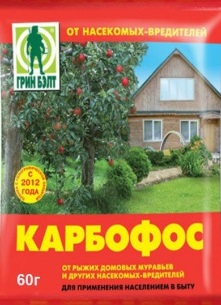
The drug "Karbofos" (package - 60 g)
Used against weevils, leaf rollers, ticks, sawflies, moths, scale insects, cherry flies: 1 sachet per 8 liters of water. Sprayed during the growing season when pests appear. Spend up to 2 liters of solution for a young tree (up to 6 years); up to 10 l - for a fruiting tree. The number of treatments is two.

The drug "Kinmix" (1 ampoule - 2.5 ml)
Used against leaf-gnawing and sucking insects: 1 ampoule per 10 liters of water. Spraying when pests appear. Spend up to 2 liters of solution for a young tree, up to 5 liters for a fruiting tree. The number of treatments is two.
The drug "Citcor" (1.5 ml)
Applied against the codling moth, leaf rollers: 1.5 ml per 10 liters of water. Spend up to 2 liters of solution for a young tree (up to 6 years old), up to 10 liters for a fruit-bearing tree. The number of treatments is three.

The drug "Anti-tick" (4 ml)
Used against herbivorous mites: 4 ml per 10 liters of water. Spend up to 2 liters of solution for a young tree, up to 5 liters for a fruiting tree. The number of treatments is two.

The drug "Neoron" (15 ml)
Used against herbivorous mites: 15 ml (3 ampoules) per 10 liters of water. Spend up to 2 liters for a young tree (up to 6 years old), up to 10 liters for a fruit-bearing tree. The number of treatments is one.

Colloidal sulfur preparation (package - 40 g)
Used against herbivorous mites: 40 g (1 packet) per 5 liters of water. Spray when pests appear. The number of treatments is five.
Remedies for plant diseases
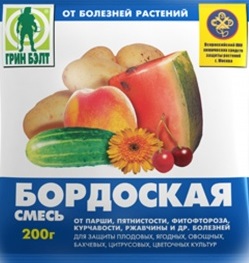
The drug "Bordeaux mixture" (3% solution)
Used against scab and various spotting, moniliosis: 100 g per 1.7 liters of water. Spray before blooming and during budding. The number of treatments is one.
The drug "Bordeaux mixture" (1% solution)
Used against scab and various spotting, moniliosis: 100 g per 5 liters of water. Spray before flowering; immediately after flowering; further with an interval of 10 - 15 days. The number of treatments is six.

The drug "Copper sulfate" (50 g)
It is used against scab and various spotting, moniliosis, phyllosticosis, drying out: 50 g per 5 liters of water. Spend up to 2 liters of solution for a young tree (up to 6 years old), up to 10 liters for a fruit-bearing tree. The number of treatments is one.
The preparation "Sulfur colloidal" (40 g)
Used against scab and powdery mildew: 40 g per 5 liters of water. Sprayed when diseases appear with an interval of 10 - 14 days. The number of treatments is five.

The drug "Topaz"
Used against powdery mildew: 2 ml per 5 liters of water. Spend up to 2 liters of solution for a young tree, up to 5 liters for a fruiting tree. The number of treatments is four.
The drug "Hom" (copper oxychloride)
Used against scab and moniliosis: 40 g per 10 liters of water. Spend up to 2 liters of solution for a young tree (up to 6 years old), up to 10 liters for a fruit-bearing tree. The number of treatments is six.
Basic rules for the use of plant protection products
1. Use the drugs in the doses indicated in the instructions for use.
2. Prepare the working solution right in the garden immediately before use. It is not recommended to store the working solution.
3. It is necessary to work in a special dressing gown or raincoat, rubber gloves, glasses, gauze bandage or respirator.
Carry out the treatment in dry, calm weather in the morning hours, after the dew has dried (from 7 to 10 hours) or in the evening before dew falls (from 17 to 22 hours). It is not recommended to process trees at temperatures below 5 ° C.
4. Apply the working solution with a fine spray to the underside and on the upper side of the leaves.
5. Start processing the crown of the tree from the top, moving downward.
6. At the end of the work, wash your hands and face thoroughly with soap and water, rinse your mouth clean water, wash work clothes. Pour the rest of the solution, water after washing clothes and washing dishes and a sprayer into a special pit, remote from reservoirs and wells, and cover with earth. The dishes used for the preparation of solutions must not be used for food products, water storage.
7. The use of drugs should be discontinued 20 - 25 days before harvest, unless otherwise indicated in the instructions for use.
Fine( 1 ) Badly( 0 )
It is an important task for gardeners in the season, since almost all of them plant these fruit trees... To successfully protect apple trees from pests, you need to have an idea about them, know their biological characteristics, the reasons for their appearance and the nature of the damage inflicted on plants.
Apple honeydew. This pest secretes a sugary sticky excrement called honeydew on which a sooty fungus settles. And as a consequence:
branches, leaves, fruits are covered with a dirty black bloom. The leaves become smaller, damaged, and the flowers, fruits, ovaries die off and fall off.
Protecting the apple tree from the pest of apple honeydew consists in treating the plant with nitrophen: 250 g per 10 liters of water. During the period from the beginning of budding to flowering, benzophosphate (60 g per 10 l of water), green soap (300 g per 10 l of water), as well as decoctions, infusions of herbaceous plants are used.
Red-haired apple aphid. Mostly damages old trees. The leaves curl up in places of damage to the lower side, forming dense wrinkled rollers of red-yellow and cherry-red color. Red bumps may form across the entire sheet. Such leaves dry and fall off.
Protecting the apple tree from pests such as aphids consists in spraying the trees before budding. The drugs are used the same as in the fight against copperhead. First, it is necessary to clean the trunk and main branches from dead bark.
Red fruit mite. This pest can be found on an apple, cherry, mountain ash, plum, pear. The larvae of this pest are located at the ends of blossoming leaves. If there are many larvae, then the leaf turns red. After 2-3 weeks, adult mites appear from the larvae, which suck the juice from the leaves. The leaves turn brown and fall off.
Protection of the apple tree from the pest of the red fruit mite consists in spraying with infusions of dandelion, mustard, chamomile. If the number of mites is large, then treatment is carried out, until the kidneys swell, with nitrophen (250 g per 10 l of water). During the time between the beginning of budding and the appearance of buds, trichlorol-5 is sprayed (250 g per 10 l of water).
Apple blossom beetle. This beetle 5 mm long with a long thin curved proboscis spends winter under fallen leaves, in hollows and cracks in the bark. These pests eat away the insides of the buds, glue unblown leaves with their secretions, which soon dry up.
Protection of the apple tree from the pest of the apple blossom beetle consists in shaking off the beetles from the trees in the morning and evening hours during the period of blooming and swelling of the buds, when the temperature does not exceed 10 degrees. At the beginning of spring, trapping belts are installed on the tree trunk at the base, which are impregnated with chlorophos. Chemical treatment of trees with chlorophos (25 g per 10 l of water) is effective during the period from the opening of the buds to the exposure of the buds.
Apple moth. A small butterfly with a wingspan of about 2 cm. Its caterpillar is about 18 mm long, grayish-yellow in color with two rows of black dots on its back. In the spring, a few days after the buds open, caterpillars begin to gnaw on young leaves. The caterpillars eat the leaves for 40 days before transitioning to the pupal state.
Protection against apple moth consists in spraying the plant with nitrophene (250 g per 10 l of water) until the buds open and trichlorol-5 (250 g per 10 l) during the period from the beginning of the opening of the buds to the appearance of buds.
When the caterpillars appear (at the beginning of the opening of the buds) and at the moment they emerge from the leaves (before flowering), the trees are sprayed with a solution of karbofos (80 g per 10 l of water). Infusions of tobacco, tomato tops, and bitter wormwood are also used to protect apple trees from pests of apple moth.
Leaf rollers. These are small butterflies. The leafworm caterpillar feeds mainly on leaves, rolling them into a ball or tube. The budworms eat flowers, buds, fruits, and leaves.
Moreover, the fruits can be pears and other trees and even berry bushes. In early spring, at a temperature of 8-10 degrees above zero, the caterpillars begin to eat the buds, and then damage the leaves, pulling them and the inflorescences into a lump with cobwebs.
Protecting apple trees from leafworm pests must be carried out by spraying them with chlorophos (20 g per 10 l of water) before the caterpillars emerge from their wintering sites. In summer, plants can be treated with the same preparations as in the case of the codling moth. It is also possible to use preparations in the form of infusions and decoctions from the tops of tomatoes and wormwood.
Apple moth. it small size ash gray butterfly. On apex of each wing there is a brownish-brown spot with a yellow tint. This pest can destroy up to half of the entire crop, penetrating into the fruit pulp and eating it up to the seed chamber.
To protect the apple tree from the pest, the codling moth uses trapping belts. They are made of 2-3 layers of burlap or wrapping paper, the width of the belt is 15-20 cm. 2-3 weeks after the end of flowering, the belts are applied to the tree trunk.
Above and below the belts are tied with an elastic band so that the edges are slightly bent and the caterpillars can crawl under them to create a cocoon. After harvesting, the belts are examined. If you regularly pick up fallen apples, you can destroy most of the moth. This should be done daily, as moths usually crawl away on the very first night.
Apple sawfly. This insect resembles a slowly flying bee. This insect begins to fly 3-5 days before the beginning of flowering of early varieties of apple trees, laying one egg at a time in the tissue of the receptacle or sepal.
The larvae feed on ovaries. Sawfly larvae live only in the ovaries of young fruits, eating away at their core. In this they differ from the codling moth, the caterpillars of which only eat the formed fruits.
You can protect apple trees from the apple sawfly by shaking off adults on the litter before flowering, preferably in cloudy weather. A significant effect can be obtained by digging near-stem circles, during which part of the pupae and larvae perish. Chemistry is also used.
Before flowering, trees are sprayed with chlorophos (25 g per 10 l of water) or karbofos (80 g per 10 l of water) .The second time is sprayed against the larvae immediately after flowering. A decoction of tomato tops is also used to protect apple trees from apple sawfly pests.
Timely and competent protection of apple trees from pests helps to preserve the harvest.
Protecting the garden from pests and diseases is one of the most important tasks of the gardener. Apple tree protection must be correct and timely. Let's take a look at how to prevent the invasion of pests and diseases into the garden.
Unfortunately, trees cannot escape from rodents or fend off insects. But we can help them! :) Professional gardeners with many years of experience will help you to carry out defensive measures!
Winter pests have no place in the garden
There are all kinds of means of protecting apple trees from pests and diseases, but we will not disassemble them all. Here are the simplest methods for protecting apple plantations. First, let's figure out how and from what to defend the garden in the winter season. All work is carried out in the fall, even before the onset of frost.
The program for protecting apple trees in winter includes several activities:
- installation of heaters;
- unfolding poisonous baits;
- installation of defensive structures against large pests.
Let's consider each item separately.
- The first measure is to protect the apple trees from frost. Frostbite is one of the main reasons for the death of a garden. Of course, first of all, plants with low frost resistance are injured, but sometimes winter-hardy varieties are also injured. One sudden change in temperature can practically destroy the entire landing. The weakest part of the tree is the bole. Actually, it must be insulated. To do this, it is enough to wrap the stem with tar paper or roofing felt. If desired, burlap can be laid under the material.
- Point number 2 is to protect apple trees from mice in winter. The easiest way to get rid of intrusive rodents is to place poisonous baits in the garden. At the same time, when laying out the "snacks", cover them with planks or other materials at hand. Your task: to hide the poison from the bird's eyes. Otherwise, instead of killing mice, the result of your labor will be killing birds.
- The third point is protecting apple trees from hares, then poisonous baits will not help. The easiest way to protect plants is to hang large, large black bags on the trees. They are tied by the handles. Developing in the wind, they will play the role of a scarecrow. Cowardly animals are unlikely to come close to the garden, where there are many "terrible creatures", perfectly visible against the snowy background. There is another way to ward off the "oblique" from the tree. Protecting apple trees from rodents consists in wrapping barbed wire around the stem. Not a single animal will gnaw on thorny metal.
- This technique will not help with beavers.... Here you will have to install fences around each tree. As a rule, fences are made of a 1-meter-high chain-link mesh. For aesthetics, they are dyed green. So protecting apple trees from beavers can serve as a kind of decor. :)
Our gardeners will help you set traps for pests, as well as increase the winter hardiness of trees. Just one phone call and we will gladly handle everything necessary measures in your garden! :)
Defending against disease
In the spring, winter defensive installations are removed and another event is held: protection of apple trees from diseases and pests. First, let's take a look at how to protect apple trees from diseases. Of course, the best way to avoid diseases is timely prevention. Therefore, at the very beginning of spring, the garden is processed with special means.
For example, spraying trees with copper sulfate or Bordeaux mixture is a kind of protection for apple trees from scab and other spots. You can also treat the garden with special agents against this disease, but it is better to use combined preparations or broad-spectrum fungicides.
Plants are processed several times in spring: before bud break, before flowering, during and after. In this case, different fungicides are often used. By the way, the protection of apple trees in the spring from many diseases consists in spraying with preparations based on copper. So, sometimes it is better to replace copper sulfate with iron sulfate. Its spectrum of action is similar, but ferrous sulfate has a unique feature - it saturates plants with an important trace element. Iron plays an important role in the life of the Yablonev tribe. The trace element is involved in many oxidative processes, the deficiency of the element affects both the growth of the trees themselves and the quality of the fruits.
Protecting apple trees video
Apple pests and diseases
Pests. All parts of the fruit tree are affected. Aphids, flies, ticks suck out juice from leaves, buds, buds. The apple moth gnaws at the leaves. The sawfly and moth attack the fruit. Let's consider some of the most harmful and common apple pests in the gardens of the Northwest.
Green apple aphid. Reproducing very quickly, aphids form numerous colonies on leaves and young shoots. She sucks the juice out of them, as a result, the leaves become wrinkled, curled. In autumn, it lays oval, black, shiny eggs on the branches.
Control measures: release ladybirds into the garden, spray with 3% nitrafen solution, 0.3% karbofos solution. Spraying tobacco broth with soap is of some benefit.
Red apple mite. During the summer, 3-4 generations of ticks appear. Reddish eggs overwinter on the bark, near the buds and in the forks of branches. Before the apple tree blooms, larvae begin to hatch. They settle on the leaves and suck the juice out of them.
Control measures: alternate 0.3% solutions of malofos and dicofol. Remove old bark from tree trunks and burn it.
Apple honeydew (leaf beetle). Eggs are orange-yellow in color, hibernate at the base of the buds, on the shoots. In the spring, larvae hatch, they gather on the blossoming buds, penetrate inside them and suck the juice, sticking them together with a sweetish discharge - honeydew.
Control measures: before bud break, spray with 2% nitrafen solution, while bud break - with 0.3% karbofos solution. Fumigation of trees with tobacco smoke for 1.5-2 hours helps.
Apple moth. Young caterpillars overwinter on the bark of branches and shoots under a shield made of mucus secreted by the butterfly. During the budding period and the beginning of flowering, the caterpillars leave their wintering sites and settle on the leaves, make mines, biting into the leaves. During flowering, they come out of the mines and feed on leaves. Older caterpillars eat leaves and form cobweb nests on them, in which they pupate.
Control measures: at the beginning of leaf opening and after flowering, spray with 0.7% chlorophos solution or 0.2% zolone solution.
Leaf rollers. Eggs overwinter on the bark of branches and trunks in the form of plaques of mucus secreted by the butterfly during egg laying. In spring, hatching caterpillars damage the blossoming buds and buds. In the middle of summer, caterpillars pupate in a folded leaf.
Control measures: in early spring, spray with a 3% nitrafen solution; after budding - 0.7% chlorophos solution or 0.2% zolone solution; peel and burn old bark.
Apple blossom beetle. Beetles overwinter in hollows and crevices of the bark, under fallen leaves. In the spring, they crawl onto trees and intensively feed on the buds, gnawing out narrow deep holes. Females pierce the buds and lay eggs in them. The hatched larvae eat out the inner parts of the buds. Damaged buds do not open.
Control measures: in early spring, shake off beetles on shields 3-4 times and destroy them; spray with a 0.3% solution of chlorophos or karbofos; arrange hunting belts on the trunks.
Apple moth. Caterpillars hibernate in bark crevices and in soil. They pupate during budding and flowering. The butterflies emerge at the end of flowering and lay eggs on the top of the leaf for 30 days. Caterpillars feed on fruits, eating part of the seeds. Affected fruits ripen ahead of time and fall off.
Control measures: be sure to collect and destroy carrion, clean the bark, arrange trapping belts, disinfect the bark; 15 days after flowering of winter varieties of apple trees, spray with 0.2% chlorophos solution or 0.3% karbofos solution.
Winter moth. Eggs overwinter near the buds and on the bark of trees. When the buds open, the caterpillars that appear eat the buds, buds, flowers, leaves.
At the beginning of summer, the caterpillars descend to the ground along the cobweb and pupate in the soil. After leaf fall, wingless butterflies emerge from pupae, which crawl onto a tree and lay eggs.
Control measures: in early spring, spray with a 3% nitrafen solution; after budding - 0.3% solution of chlorophos or karbofos; arrange trapping belts.
Diseases. Fruit trees infect fungal, bacterial and viral diseases, as well as diseases associated with a lack of nutrients, unfavorable temperature and water conditions. Diseases lead to the destruction of the trunk, branches, roots, and decay of the fruit.
Apple scab. The most common fungal disease. The pathogen overwinters in the bark of trees and on fallen leaves. In spring, the spores of the fungus fall on the leaves, forming spots with a greenish bloom. Brown spots appear on the affected fruit. With severe damage, the leaves begin to fall off. The fruits shrink, cracks form on them.
Control measures: rake and destroy fallen leaves and spray the soil with a 0.3% nitrafen solution; when buds appear and immediately after flowering, spray with 1% Bordeaux liquid or 0.5% copper oxychloride solution.
Fruit rot. Fungal disease. The causative agent of the disease hibernates in fallen fruits. In the spring, grayish round pads containing spores appear on overwintered rotten fruits. As a rule, fruits damaged by pests, scab or mechanically are affected. Damp weather contributes to the development of fruit rot.
Control measures: remove and destroy affected fruits; during the separation of the buds and immediately after flowering, spray with 1% Bordeaux liquid (repeat with an interval of 15 days two to three times).
Root cancer. Bacterial disease. Bacteria living in the soil, through the wounds, enter the roots and cause their growth. As a result, the nodules on the roots will be delighted.
Control measures: treat the roots of seedlings with a 1% solution copper sulfate within 3-5 minutes, then rinse with water; reject and destroy affected seedlings.
Black cancer ("antonov fire"). It affects all aerial parts: leaves, flowers, fruits, branches and trunks. Initially, small leaves appear brown spots, which, expanding, reach a diameter of 5 - 6 mm. Affected flowers turn brown and dry out. Fruits develop brown spots with concentric circles. The fungus penetrates into the bark of skeletal branches and stems through wounds. The affected area has a charred appearance. If skeletal branches are damaged, the tree may die in 2-3 years.
Control measures: cut and burn affected branches in early spring; carefully handle and close up wounds on the bark; at the beginning of bud break, spray the trees with 1% Bordeaux liquid.
Calendar of works to protect the apple tree from pests and diseases
The fight against pests and diseases should be started even before they are detected and carried out simultaneously on the entire array of the garden, and not in its individual areas.
Seasonal alternation of pesticides is desirable, since pests get used to them and form resistant populations. Depending on the age of the trees, the consumption rate of the solution when spraying young (up to 6 years old) apple trees is 1.5-2 liters per tree, fruiting - up to 10 liters. The soil and fallen leaves are sprayed at the rate of 0.25 liters of solution per 1 m2. The consumption of the solution for 1 hectare of the garden depends on the layout of the trees.
In early spring, before bud break, the damaged branches are cut out and destroyed, the wounds are cleaned and coated with garden varnish, plasticine or treated with nitrafen. The dead trees are uprooted.
Refreshing the whitewashing of trunks and skeletal branches should be carried out with lime with the addition of 3% copper sulfate, or with water-based paint ВС-511, or with a mixture of clay with mullein in a ratio of 1: 1. It is imperative to hang new and repair old birdhouses and titmouses.
At a temperature of 5 ° C, the crown and leaves under the trees should be sprayed with a 3% nitrafen solution, or a mixture mineral fertilizers(400-700 g of urea or 100 g of ammonium nitrate with 100 g of potassium chloride), or a 5% solution of iron or 3% solution of copper sulfate.






